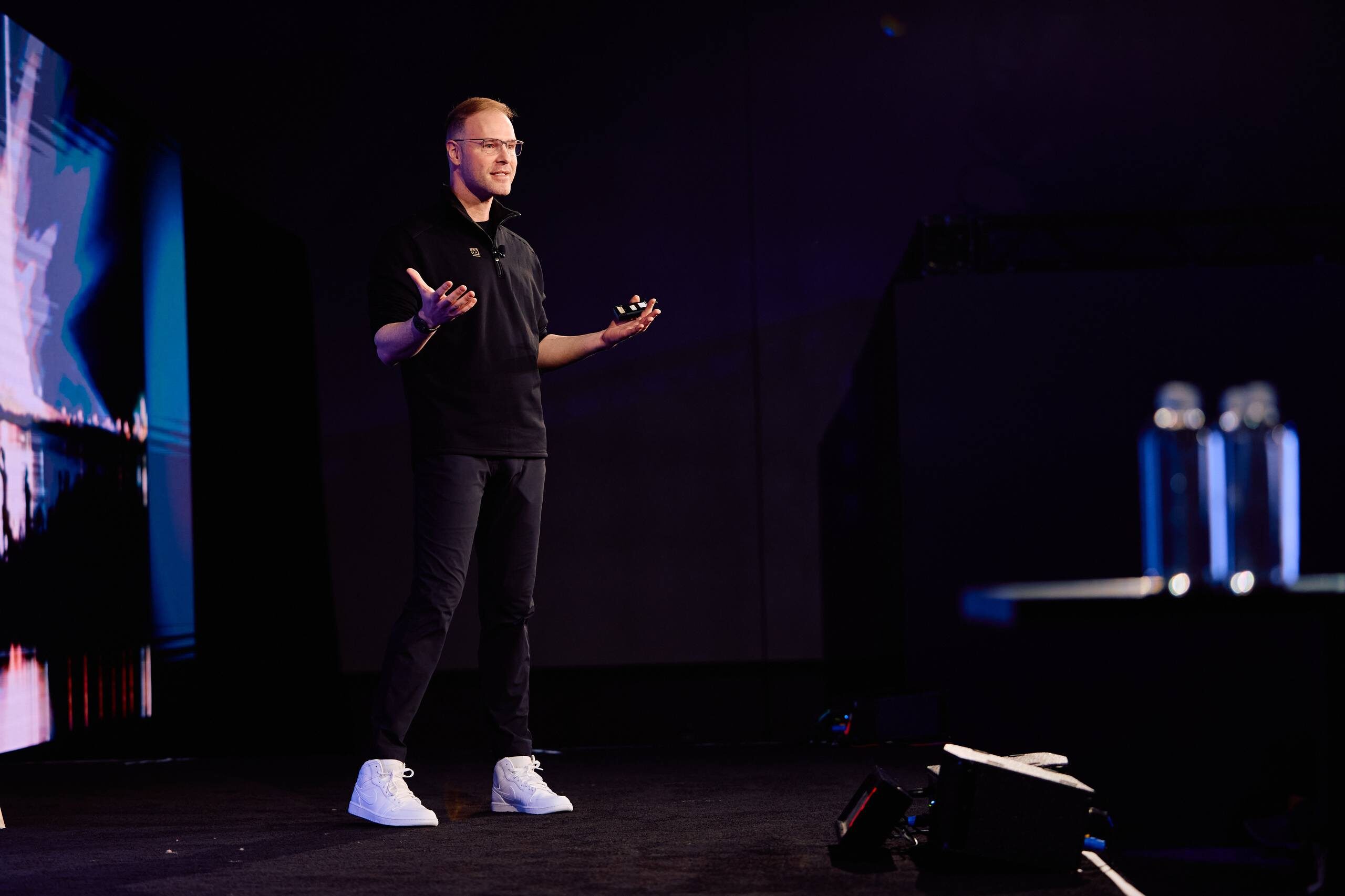This article was originally published by Will Reed and does not necessarily reflect the perspective of Insight Partners. Insight Partners is an investor in Will Reed.
There’s no other way of saying it: Hiring and retaining top talent can be tough these days.
But there’s a secret weapon that new businesses (especially startups) can leverage to combat hiring challenges, whether they’re looking to fill entry-level positions or recruit world-class executives. It’s called cultivating a people-first culture.
What is a people-first culture, and why does it make a difference in employee hiring and retention? Cultivating a people-first culture in a startup means that the organization is prioritizing the needs and desires of its people and considering those factors when creating policies and systems.
A people-first culture means this prioritization goes above and beyond words and catchphrases but is actively demonstrated and embodied in continued action.
It’s very possible to build a people-first culture, but in order to do so, startups need first to understand what this means to their own leadership and employees, why it’s essential, and how to execute this process. Keep reading to find out how to implement this in your company.
Is People-First Culture Really Attainable?
Creating a people-first culture is attainable, but it requires internal work and plenty of external communication. For example, it’s not simply enough for a startup to declare that it is a people-first organization and update the employee handbook. Rather, the proof is in the policies.
To attain people-first culture, startups need first to get their leadership and decision-makers aligned on what people-first means to the organization. Then, there needs to be processes around collecting employee feedback so leadership can understand what exactly people-first means to their employees.
Afterward, organizations need to craft and deploy people-first policies that resonate with their team members and are actionable. There also needs to be excellent open communication channels about receiving feedback on the new people-first initiatives to ensure they’re performing as intended.
In short: People-first culture is attainable, but leadership needs to “walk the walk” by creating and embodying meaningful people-first policies. This culture applies to everyone, not just a select few.
Why Do Employees Want This?
Employees seek employers with people-first culture, whether they identify it as such or not. Workplace data shows that employees in people-first organizations perform their jobs better and appear happier overall.
For example, research tells us that employees at culture-driven organizations make 26% fewer mistakes, are 22% more productive, and are absent 41% less of the time. They’re also twice as likely to recommend their employer to a friend.
There are many reasons that employees want to work at places that put them first. They want to feel valued and empowered and know their time and expertise are respected.
Employees also want opportunities for advancement, better pay, and to feel respected overall. The answer to these needs and more is prioritizing a culture that reflects these capabilities.
Plus, it’s important to note that employees prioritize the need for people-first culture. It could be the difference between someone selecting your company and working for your competition.
What Exactly Does People-First Look Like?
People-first culture can differ from organization to organization, but there are a few consistent hallmarks that startups can incorporate into their own business. Here’s what a people-first culture might look like at your startup.
Empowered Employees
Empowered employees aren’t only told they’re empowered: Their leadership demonstrates this by trusting them and giving them space to make decisions independently. This approach provides employees with autonomy over their work and supports it with resources.
Empowering employees might look like not hovering over their every move while they work or getting too involved in their small day-to-day tasks. Ultimately, leaders should also trust their employees to make good decisions and demonstrate that trust through actions.
Proper Compensation and Benefits
Inadequate compensation and employee turnover go hand-in-hand, as do proper compensation and a people-first culture. Many employees cite compensation as a reason why they left their job in recent years, and studies show that insufficient benefits are another main reason employees leave.
The point is that employees want competitive compensation and benefits, and it’s no longer enough to make them feel appreciated in other ways (they can’t pay their bills with free lunch, after all). For startup leaders to demonstrate an employee-first culture, compensation and benefits must clearly show how much their employees are valued.
Leaders Who Listen
One main pillar of an excellent people-first culture is leaders who visibly listen to their employees and feedback. Employees want to be heard, share their feedback, and have that feedback taken into consideration. But it’s not enough to just quietly listen; leaders need to show their people that they’re actually listening and considering what is being said.
In order to demonstrate that there’s a culture around listening, leaders can create processes around communication, practice and show empathy, and make themselves available for one-on-one discussions. Leaders can also share feedback collectively, as well as share the ways that feedback is being addressed.
Tight Company Values
Bland and generic company values aren’t going to inspire a team or make them feel unified in a people-first company culture. Instead of using overplayed standard company values, leadership should develop genuine, original, and authentic company values that genuinely mean something to the organization and its people. These tight company values can then be embodied in all other aspects of the organization.
Effective Communication
Effective, clear, and transparent communication is a critical pillar of a people-first company culture. No employee wants to work at a place where they feel like there is one-way communication that is strained, dishonest, or withholding.
Instead, leaders can take steps to demonstrate and encourage effective communication. This includes encouraging employee feedback, holding check-ins and standup meetings, and sharing updates transparently.
Flexibility and Understanding
In the age of remote work, hybrid work, and WFH, employees actively seek increased flexibility and understanding of their work requirements. While not every workplace needs to be hybrid or remote, employees generally demand increased flexibility that improves their work/life balance, physical and emotional well-being, and ability to care for their loved ones. Flexibility and understanding might look like policies around where work can be completed (perhaps remotely if a loved one is sick, for example), when work can be completed, and empowering employees to accomplish tasks in their own ways.
Opportunities for Growth
While startup employees and executive leaders might not be looking to “climb the corporate ladder” in the traditional sense, team members still want to feel like the future of their career matters to their organization. With that in mind, startups should take steps to provide growth opportunities in their employee-first culture. This might include training sessions, specialty seminars, advanced education or leadership training resources, and pipelines to help talented employees attain new roles.
What’s the Business Impact of a People-First Culture?
A people-first culture isn’t only good for the people in an organization, but it’s also excellent for the business itself. As we touched on earlier, employees at culture-driven organizations are better employees: They’re more accurate in their work, more productive, and have better attendance at work.
That’s likely because when people feel valued and cared for by their workplace, they are more motivated to perform their jobs and more satisfied in their roles overall. With that, organizations increase their revenue and retain top talent.
How Do You Start Implementing People-First Techniques?
People-first techniques start with the executive leadership team. Leaders and executives need to clarify what people-first should look like in their organization and create comprehensive strategies around executing it. Then, these executive leaders need to lean on their middle managers to help push these people-first policies and practices.
We Believe People-First Culture Is How the Best Companies Are Built
Top-tier organizations need next-generation practices regarding their culture and people because the corporate culture of years past just isn’t cutting it anymore. When executed correctly, people-first culture doesn’t only contribute to happier and more productive employees but can help boost employee retainment and improve company metrics overall. Now that’s something we can all get behind.
Note: This article has been updated to reflect the current hiring landscape.







